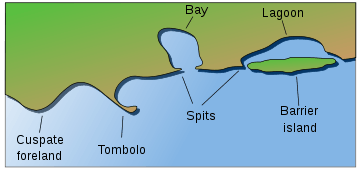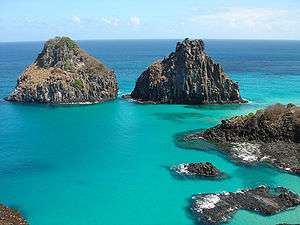Region of freshwater influence
Region of Freshwater Influence (ROFI), a term coined by Prof. John Simpson[1] of the University of Wales, Bangor, and co-authors, in 1993 in Oceanologica Acta[2] for the Rhine river plume. The term refers to regions where rivers debouch into estuaries and coastal shelf seas where the currents patterns are governed by density differences between salt sea water and fresh river water. In other words, a ROFI is the region between the shelf sea regime and the estuary where the local input of freshwater buoyancy from the coastal source is comparable with, or exceeds, the seasonal input of buoyancy as heat which occurs all over the shelf.[3] Americans usually use the term river plume where Europeans use ROFI.
External links
- Modelling of the Rhine region of freshwater influence
- "Regions of Freshwater Influence". University of Wales, Bangor. Retrieved 2009-10-29.
Notes
- ↑ John Simpson. "Biography". University of Wales, Bangor. Retrieved 2009-10-29.
- ↑ Simpson, J.H.; Bos, W.G.; F. Shirmer; A.J. Souza; T.P. Rippeth; S.E. Jones; D. Hydes (1993). "Periodic stratification in the Rhine ROFI in the North Sea". Oceanologica Acta. 16 (1): 23–32.
- ↑ Simpson, J.H. (1997). "Physical processes in the ROFI regime". Journal of Marine Systems (12): 3–15.
This article is issued from Wikipedia - version of the 7/16/2015. The text is available under the Creative Commons Attribution/Share Alike but additional terms may apply for the media files.

